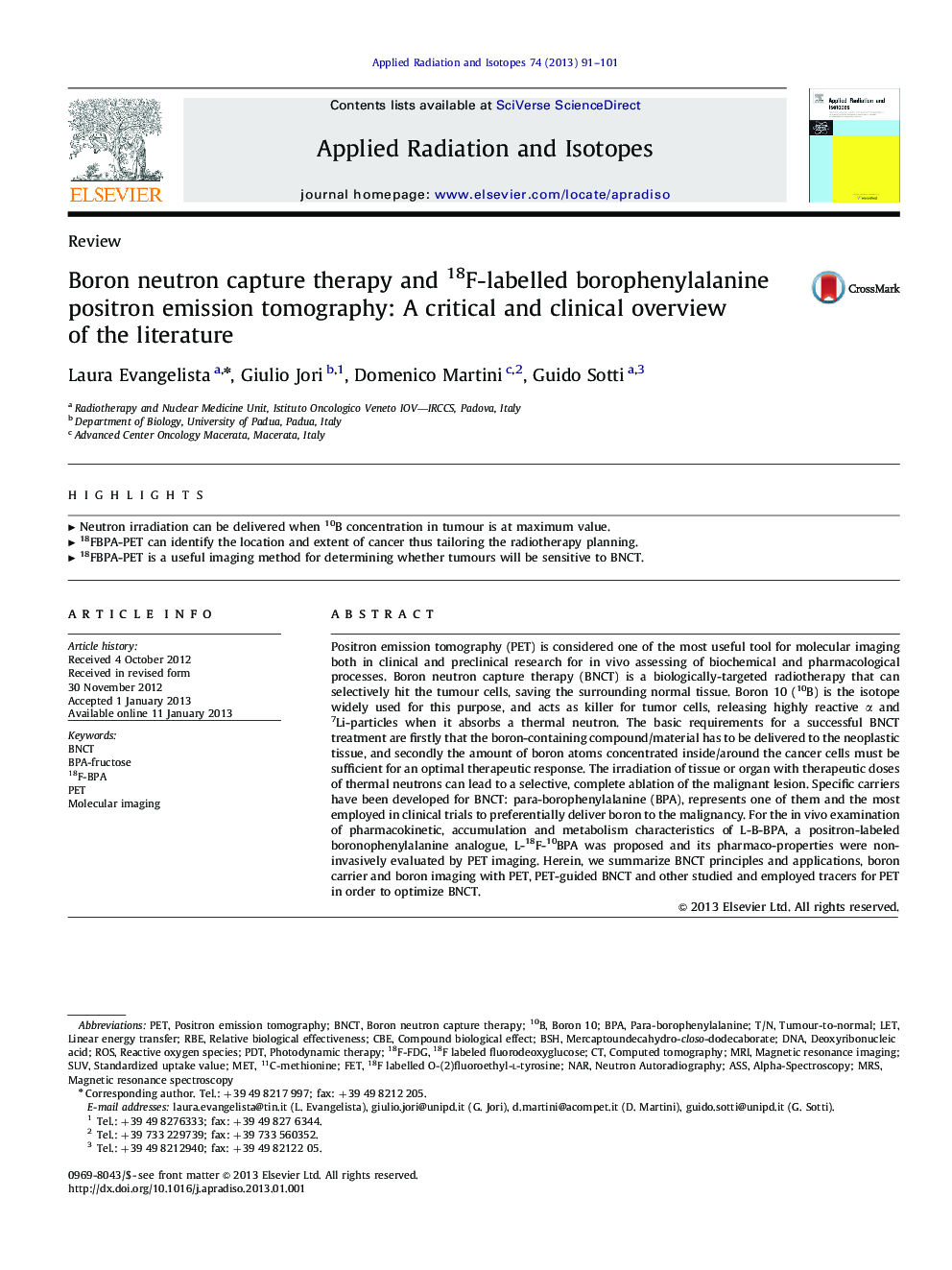| کد مقاله | کد نشریه | سال انتشار | مقاله انگلیسی | نسخه تمام متن |
|---|---|---|---|---|
| 1876001 | 1532122 | 2013 | 11 صفحه PDF | دانلود رایگان |

Positron emission tomography (PET) is considered one of the most useful tool for molecular imaging both in clinical and preclinical research for in vivo assessing of biochemical and pharmacological processes. Boron neutron capture therapy (BNCT) is a biologically-targeted radiotherapy that can selectively hit the tumour cells, saving the surrounding normal tissue. Boron 10 (10B) is the isotope widely used for this purpose, and acts as killer for tumor cells, releasing highly reactive α and 7Li-particles when it absorbs a thermal neutron. The basic requirements for a successful BNCT treatment are firstly that the boron-containing compound/material has to be delivered to the neoplastic tissue, and secondly the amount of boron atoms concentrated inside/around the cancer cells must be sufficient for an optimal therapeutic response. The irradiation of tissue or organ with therapeutic doses of thermal neutrons can lead to a selective, complete ablation of the malignant lesion. Specific carriers have been developed for BNCT: para-borophenylalanine (BPA), represents one of them and the most employed in clinical trials to preferentially deliver boron to the malignancy. For the in vivo examination of pharmacokinetic, accumulation and metabolism characteristics of L-B-BPA, a positron-labeled boronophenylalanine analogue, L-18F-10BPA was proposed and its pharmaco-properties were non-invasively evaluated by PET imaging. Herein, we summarize BNCT principles and applications, boron carrier and boron imaging with PET, PET-guided BNCT and other studied and employed tracers for PET in order to optimizeBNCT.
► Neutron irradiation can be delivered when 10B concentration in tumour is at maximum value.
► 18FBPA-PET can identify the location and extent of cancer thus tailoring the radiotherapy planning.
► 18FBPA-PET is a useful imaging method for determining whether tumours will be sensitive toBNCT.
Journal: Applied Radiation and Isotopes - Volume 74, April 2013, Pages 91–101